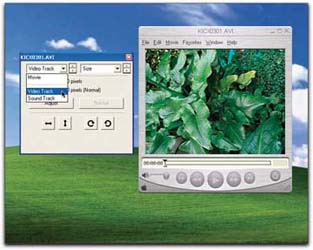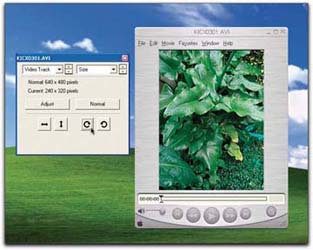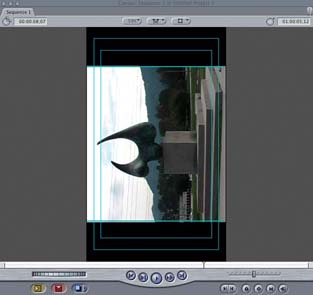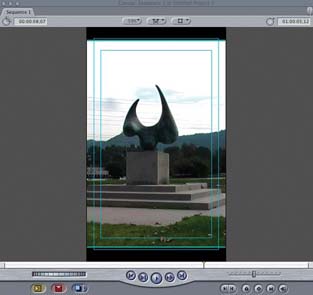Hack 42. Rotate Your Movie from Horizontal to Vertical
| < Day Day Up > |
|
Who says you have to shoot all your movies horizontally? Just as with stills, sometimes it's fun to turn the camera on its side. But when you upload your movies to your computer, they're turned the wrong way! Here's how to fix that. When making movies with your digicam, you don't want your compositions limited any more than you do when shooting stills. Imagine if someone told you that you could shoot only horizontal pictures for the rest of your life. You'd tell them where to go stick their memory card. The problem with movie making is, you might shoot your video with a vertical orientation, but when you upload the snippets to your computer, everything is horizontal. And 9 out of 10 chiropractors will tell you not to crane your neck sideways to watch these movies. Fortunately for the health of your entire viewing audience, there is a simple fix. 4.5.1. Rotating a videoAfter you upload the video to your computer, open a snippet in QuickTime Pro, the versatile movie viewing/editing application.
From the Movie drop-down menu, choose Get Movie Properties. You've just tapped into one of the most powerful areas of QuickTime Pro. There are two drop-down menus at the top of this dialog box. From the left one, choose Video Track, and from the right one, select Size, as shown in Figure 4-9. You'll see that the dialog box changes content and options as you choose different items from the drop-down menus. In this case, two of the goodies you can access are found in those rotation arrows in the lower-right corner. Click on the one that rotates your movie in the desired direction, as shown in Figure 4-10. Like magic, your movie and its controls are now oriented the way you originally intended. Either way you do it, you can now edit, trim, and stitch together movie clips to your heart's content. Of course, all of your movies have to be oriented the same way; otherwise, you'll get some strange-looking results. Figure 4-9. Making selections in the QuickTime Movie Properties dialog box 4.5.2. Editing a Vertical VideoYour editing system is expecting "normal" video in a horizontal position, so you need to create a custom setting. Fortunately, this is an easy task to achieve; the only setting you'll have to change is the height and width of the video. In fact, all you have to do is switch the two numbers. 4.5.2.1. Setting up your timelineTo edit your vertical footage, you need to create a new project and change your timeline settings accordingly. For example, if you shot on DV, change your width and height from 720 x 480 (720 x 576 PAL) to 480 x 720 (576 x 720 PAL):
Figure 4-10. Rotating a movie in the QuickTime Movie Properties dialog box
After setting up your project to handle a vertical video, you need to alter your footage to match. 4.5.2.2. Importing your footageEven though you've shot your video vertically, neither your camera nor your editing system will be aware of that fact. Therefore, it is essential that you rotate your video 90 degrees, as outlined previously. Because your video has already been transferred to your computer, and rotated, all you need to do is import the footage into your editing system. After importing your footage, you can proceed to edit your movie just as you normally would. You will know if your video imports correctly as soon as you place it on your timeline. Figure 4-11 shows a vertical video as imported by an editing system without rotation, and Figure 4-12 shows the same image after it has been rotated appropriately. Figure 4-11. Vertical video, as imported There's something inherently interesting about a vertically framed movie. And it's an option I encourage you to try as appropriate subjects present themselves. 4.5.3. See Also
Derrick Story Figure 4-12. The rotated footage |
| < Day Day Up > |
EAN: 2147483647
Pages: 158

 Settings
Settings